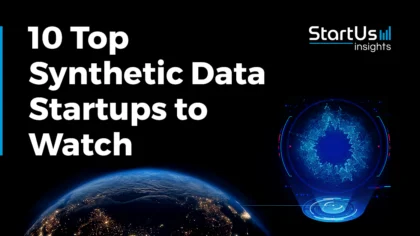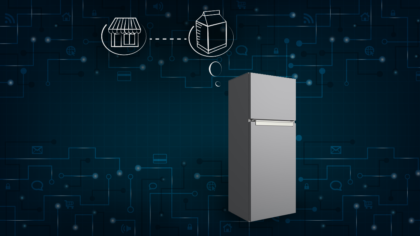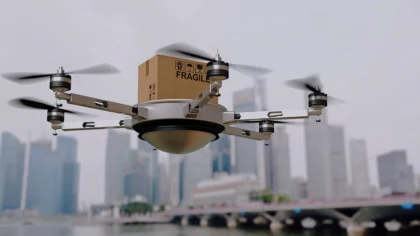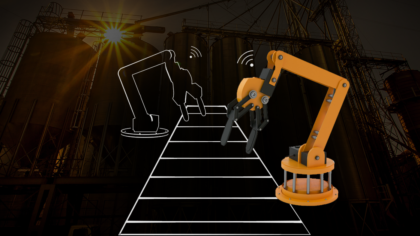Accelerate Productivity in 2025
Reignite Growth Despite the Global Slowdown
Asset tracking and monitoring across industries accelerate the growth and adoption of IoT. Device manufacturers are leveraging various tools and technologies to address this demand while providing faster and more powerful IoT devices. We give you a comprehensive view of global Internet of Things trends so that you can follow the latest developments in the industry. For example, faster data transfer, better processing power, and improved energy efficiency are the primary outlook for the IoT industry. That is why solutions for communications, data, and hardware IoT stacks see the most startup activity.
Innovation Map outlines the Top 10 Internet of Things Trends & 20 Promising Startups
For this in-depth research on the Top 10 Internet of Things Trends & Startups, we analyzed a sample of 5 877 global startups and scaleups. The result of this research is data-driven innovation intelligence that improves strategic decision-making by giving you an overview of emerging technologies & startups in the IoT industry. These insights are derived by working with our Big Data & Artificial Intelligence-powered StartUs Insights Discovery Platform, covering 2 500 000+ startups & scaleups globally. As the world’s largest resource for data on emerging companies, the SaaS platform enables you to identify relevant startups, emerging technologies & future industry trends quickly & exhaustively.
In the Innovation Map below, you get an overview of the Top 10 Internet of Things Trends & Innovations that impact 5 877 companies worldwide. Moreover, the Internet of Things Innovation Map reveals 20 hand-picked startups, all working on emerging technologies that advance their field.
Top 10 Internet of Things Trends
- 5G
- Edge IoT
- IoT Cybersecurity
- Artificial Intelligence of Things
- Low-Power Wide-Area Networks
- Wearable IoT
- Cloud IoT
- High-Performance Computing
- Web of Things
- Satellite IoT
Tree Map reveals the Impact of the Top 10 Internet of Things Trends
Based on the Internet of Things Innovation Map, the Tree Map below illustrates the impact of the Top 10 Internet of Things Trends in 2023. Startups and scaleups are developing 5G-ready IoT devices to achieve low-latency communication and accommodate more devices. Other connectivity solutions impacting IoT deployment include low-power wide-area networks (LPWAN), satellite IoT, and the Web of Things (WoT). Further, the IoT industry sees increased activity in data processing technologies like edge and cloud computing. The need for faster data processing also drives innovations in high-performance computing (HPC) and Artificial Intelligence of Things (AIoT). Lastly, IoT cybersecurity solutions see growth to tackle the growing cyber attacks while the increased demand for wearables creates a market for wearable-specific IoT design.
Global Startup Heat Map covers 5 877 Internet of Things Startups & Scaleups
The Global Startup Heat Map below highlights the global distribution of the 5 877 exemplary startups & scaleups that we analyzed for this research. Created through the StartUs Insights Discovery Platform, the Heat Map reveals that India sees the most startup activity, followed by the US and Western Europe.
Below, you get to meet 20 out of these 5 877 promising startups & scaleups as well as the solutions they develop. These IoT startups are hand-picked based on criteria such as founding year, location, funding raised, and more. Depending on your specific needs, your top picks might look entirely different.
Top 10 Internet of Things Trends in 2023
1. 5G
5G provides high-speed data transfer, ultra-low latency, and increased network reliability. That is why IoT manufacturers and system integrators are combining 5G into the communication stack. By leveraging this technology, IoT networks are able to accommodate the massive number of connected devices. 5G further enables businesses to transfer critical information in near real-time. It is vital to optimizing manufacturing operations on the go, critical infrastructure management, and real-time data processing applications. To aid this, startups develop 5G-ready chips for IoT devices and connectivity modules that integrate with existing devices. They enable IoT manufacturers to accelerate 5G adoption.
Flash Park develops a 5G-enabled Sensor
Flash Park is a Spanish startup that makes a 5G-enabled sensor for parking optimization. The startup’s parking detection device leverages NB-IoT connectivity to broadcast real-time parking spot data. This provides accurate visibility into parking space availability. Further, the startup uses AI to forecast spot availability and location services to find the nearest parking spaces. Flash Park’s sensors mitigate traffic congestion in cities and commercial facilities.
PHYTunes offers Private 5G IIoT Networks
PHYTunes is a US-based startup that makes private 5G networks for IIoT devices. The startup’s patented technology utilizes an intermediate frequency (IF) band to transmit signals through common wireline infrastructure. Through this, it delivers multiplexed wireless spatial streams and control channels. PHYTunes’ technology thus enables industries to reduce latency and power consumption while improving the in-building connectivity of communication infrastructure.
2. Edge IoT
Since low latency is critical for IoT systems, moving the data to the cloud is a potential bottleneck. That is why the IoT sector is moving to edge computing for faster data processing, taking computing closer to the data source. Further, edge IoT reduces response times, increases efficiency, and improves network bandwidth. Deploying IoT on the edge also enables businesses to ensure continued systems operation even during internet failure. Companies are leveraging on-the-premise edge computing devices to localize their networks, thus ensuring minimum downtime and high-speed data processing. Furthermore, edge IoT enhances the efficiency of analytics and machine learning algorithms, improving decision-making.
Cerfe Labs makes Non-Volatile IoT Memory
US-based startup Cerfe Labs provides non-volatile memory elements for IoT devices. The startup utilizes correlated electron switches that enable low-cost, fast switching speed, and varying temperature operation ranges. They also feature low-voltage, low-current operations, resistance tuning, and easy CMOS integration. These capabilities enable IoT manufacturers to mitigate in-house memory development while ensuring high-performing IoT data processing.
SmartHub.ai simplifies Edge IoT Device Management
US-based startup SmartHub.ai builds SD-EDGE Management, an AI-enabled IoT device lifecycle management solution. It enables the IT teams to discover and manage heterogeneous edge assets across hardware, software, and protocols. The solution also features zero-trust onboarding as well as tracks vulnerabilities, anomalies, configuration drifts, and data integrity. This allows companies to better manage their edge IoT devices and mitigate cybersecurity risks.
3. IoT Cybersecurity
The rise in connected devices directly drives the increase in cyber-attacks. Malicious hackers leverage various means, such as man-in-the-middle attacks and ransomware, to attack IoT systems. Therefore, IoT designers and users now constantly monitor networks and software bills of materials to find discrepancies. For this, startups offer continuous network and device monitoring platforms that utilize behavior analytics, AI, and machine learning. They also allow IoT developers to integrate cybersecurity in the design stage and identify vulnerabilities within the hardware and software components. Consequently, IoT cybersecurity solutions enable businesses to avoid unauthorized data access and leaks, ensuring data security.
Binare aids IoT Penetration Testing
Finnish startup Binare develops a firmware analysis monitoring platform for IoT penetration testing. It analyzes firmware software components and configurations for vulnerabilities. The platform also monitors the software components to identify new threats and offers a software bill of materials. IoT manufacturers and companies use this solution to assess the reliability of products and deployments, thereby improving IoT cybersecurity.
CyAmast offers IoT Network Security
Australian startup CyAmast develops an IoT network security solution. It continuously tracks the profiles of an individual device or groups of devices in IoT environments. The solution’s flow analysis provides visibility into intended device behavior and determines whether the devices are already compromised. Moreover, it detects deviations from normal behaviors that indicate device compromise or malfunction, allowing teams to respond appropriately. This validates the end-to-end efficacy of IoT setups, enabling various industries to take advantage of the technology without the concern of cyberattacks.
4. Artificial Intelligence of Things
AIoT impacts the hardware and data stacks for device development, improving processing efficiency and moving computing to the source. This, in turn, reduces latency induced due to data transmission. Additionally, AIoT devices allow businesses to replace capital-intensive analytics platforms with more energy-efficient distributed computing systems. Since each device takes care of the localized data, the processing power required is minimal. Additionally, AIoT devices eliminate the concerns around scaling deployments as they only need access configuration into the main network. This is how AIoT increases the performance of critical systems like autonomous vehicles that requires real-time insights.
Nano-Core Chip makes AIoT System on Chips (SoCs)
Nano-Core Chip is a Chinese startup that designs AIoT SoCs. The startup combines ultra-low power event-driven chip architecture, closed-loop adaptive near-threshold circuits, high-precision sensing, and energy-efficient embedded AI to develop its SoCs. They find applications in consumer electronics, smart homes, automotive, and robotics industries, among others.
nami creates AIoT Middleware
Singaporean startup nami provides an AIoT middleware. The startup’s platform-as-a-service (PaaS) middleware integrates with IoT devices to enable intelligent sensing. For this, nami utilizes WiFi sensing over radar and indoor cameras for better coverage, occupancy sensing, and fall detection. This allows security companies and homeowners to improve indoor safety, quickly identify break-ins, and ensure timely healthcare delivery upon detecting accidents.
5. Low-Power Wide-Area Networks
Energy consumption and cost requirements are critical concerns in the wider adoption of IoT. LPWAN offers low-cost, low-power, and wide-area coverage, which is why the IoT industry sees a lot of activity in this sector. IoT companies primarily utilize LTE-M and narrowband IoT (NB-IoT) to enable low-power device operations. To aid this, startups provide plug-and-play LPWAN connectivity modules that integrate into any IoT chip through standard interfaces. This allows IoT developers to mitigate in-house connectivity chip development and reduce production costs. Further, Bluetooth Low Energy (BLE) chips find use in small-scale IoT applications like wearables and broadcasting beacons.
EdgeConcept manufactures LPWAN IoT Sensors
EdgeConcept is a German startup that develops LPWAN IoT sensors for vehicle tracking. The startup’s sensors use LTE Cat NB1 (NB-IoT) and track location data, engine values, and driver behavior, among others. EdgeConcept also develops sensors with LTE-M and NB-IoT connectivity, where one mode is used as a fallback. This allows automotive manufacturers and mobility companies to integrate tailored IoT systems without in-house product development.
Conectino offers an NB-IoT Connectivity Module
Conectino is a Spanish startup that develops an NB-IoT connectivity module. The startup’s plug-and-play gateway integrates into IoT devices to leverage its proprietary NB-IoT network. The gateway also features a programmable microcontroller and multiple serial-type communication interfaces, which supports various add-ons like external antennas or eSIMs. This allows IoT companies and users to speed up LPWAN integration, enable global coverage, and improve device management at lower capital expenses.
6. Wearable IoT
The growing demand for wearables forces manufacturers to combine all IoT stacks in a smaller form factor while ensuring operational safety. This affects the final product size as well as the applicability of the wearables. That is why startups make IoT chips and components tailored for wearable devices. For example, small IoT SoCs allow wearable manufacturers to mitigate circuit miniaturization efforts and accelerate the time-to-market. Wearable devices require varying processing and connectivity speeds based on their applications. Therefore, device manufacturers leverage technologies like near-field communication, BLE, and 5G tailored to meet specifications.
AntennaWare makes an On-Ground Surface Mount Device (SMD) Antenna
AntennaWare is an Irish startup that provides BodyWave, an on-ground SMD antenna optimized for wearable applications. It features 360-degree coverage for reduced drop-out, a compact form factor, high radiation efficiency, and lower power consumption. The startup’s antennas are efficient replacements for off-the-shelf antennas in wearables and also increase the non-line-of-sight (NLoS) link budget.
GearEx offers a Smart Biometric Wearable Device
UK-based startup GearEx creates a smart biometric safety wearable device for metallurgy, refinery, energy, and manufacturing industries. It features on-chip pre-trained models to offer automatic hazard alerts, such as exclusion zones and heavy machinery, to the workers. The device also detects potential dangerous situations like falls, fatigue, blood saturation drop, and myocardial dysfunction, improving workplace safety.
7. Cloud IoT
While edge IoT is crucial to improve the efficiency of deployments, cloud IoT accelerates the adoption of the technology. It diverts the data processing efforts from businesses to the cloud and automates the process. Consequently, it eliminates the complexities and scalability associated with IoT deployments. Further, cloud IoT enables small and medium-sized companies to integrate connected devices at a faster pace and at lower costs. To aid this, startups provide hardware and software modules that connect devices directly to cloud environments. Since most of these solutions feature a plug-and-play architecture, they also reduce the workload on IT teams during and after integration.
Golioth aids Cloud IoT Development
Golioth is a US-based startup that builds a cloud IoT development platform. It allows IoT designers to speed up product development and supports numerous compatible boards, connectivity technologies, and messaging protocols. After the design, manufacturers integrate Goliath’s software development kit (SDK) into the device firmware, and it sends data to the startup’s proprietary cloud. As a result, IoT manufacturers are able to reduce prototyping periods and the time-to-market while accelerating deployment scaling.
OneIoT makes an IIoT Gateway
OneIoT is a German startup that develops Industrial Gateway 4.0, an IIoT gateway. It enables industrial facilities to convert any measuring device into an IoT device by connecting it to the gateway. Industrial Gateway 4.0 then sends the collected data to the cloud for further processing. The startup also offers a companion app that provides relevant insights through dashboards and allows IT teams to improve device management.
8. High-Performance Computing
Efforts to move computing to the source and the need for lower latency advances the growth of HPC IoT chips and components. They use hardware design improvements or data management algorithms to significantly boost processing power. Leveraging HPC, businesses are able to distribute their processing power and make the system more energy efficient. Further, high-performing IoT devices provide real-time data into operations and enable highly precise forecasting abilities. They also improve the performance of advanced analytics, AI, and machine learning models.
Atom Semiconductor Technologies offers High-Performance IoT Chips
Hong Kong-based startup Atom Semiconductor Technologies manufactures high-performance digital chips for IoT applications. They feature an on-chip digital signal processing (DSP) unit that enables high-precision measurement and lower power consumption. The startup’s product offerings include digital optical, pressure, temperature, and humidity sensor chips, among others.
Agilor offers AIoT Data Service
Agilor is a Chinese startup that provides AIoT data services. The startup combines real-time transaction scheduling, data compression, multi-server dynamic redundancy, active rule inference, inter-thread data exchange, and historical data archiving. Through this, it provides higher data processing speeds, single-point data access, and data compression. Companies use Agilor’s solution to enable real-time data processing and predictions while ensuring data security.
9. Web of Things
Businesses and cities utilize various types of IoT devices based on their needs. This leads to IoT deployments that use varying technologies from multiple vendors, causing data silos. Web of Things tackles this by combining all IoT devices under a single platform. Consequently, it improves visibility into operations and enables better device management. Moreover, WoT preserves and complements existing IoT standards as well as future-proofs the connectivity infrastructure for new integrations. WoT also simplifies application design and enables portability across vendors and devices, increasing adoption rates.
Kentyou enables Web of Things Data Collection
French startup Kentyou offers Eclipse sensiNact, an open-source platform for data collection from heterogeneous sources. It is a middleware that connects IoT communication and connectivity stacks across manufacturers. Further, the platform combines the numerous communication protocols in the stack to enable centralized data management and analysis. This connects all IoT devices across critical infrastructures like transport, waste management, and energy, improving decision-making in urban management.
Netzo offers an IoT Orchestration Platform
Netzo is a Spanish startup that develops an all-in-one IoT orchestration platform. Its application programming interface (API) allows companies to integrate public and private systems. This enables centrally managed IoT data harvesting as the platform combines IT and IoT systems for interoperability. Consequently, the platform allows businesses to future-proof their communication infrastructure and deploy new technologies on the go.
10. Satellite IoT
The range of 5G, 4G, LPWAN, and other networks affects IoT monitoring across long distances and increases latency. That is why IoT developers utilize satellite networks to augment the connected devices for better visibility and communication range. To accelerate this, startups build and maintain satellite networks. Businesses use them by accessing proprietary IoT devices or integrating software or hardware components into existing devices. This enables companies to mitigate the massive capital expenses associated with satellite development and launch while speeding up technology integration. Along with augmenting existing connectivity technologies, satellite IoT enables connectivity in remote locations without cellular coverage.
Innova Space builds a Satellite IoT Network
Innova Space is an Argentine startup that maintains a satellite IoT network. The startup’s picosatellites and PocketQubes provide a communication network for various IoT applications. Leveraging this, IoT manufacturers and device owners mitigate in-house infrastructure development while enabling global coverage and device accessibility. Innova Space’s network finds applications in maritime, mining, and agriculture industries.
Hubble Network provides Satellite IoT Development Kit
Hubble Network is a US-based startup that makes a satellite IoT development kit. The startup’s firmware integrates into off-the-shelf Bluetooth chipsets to enable satellite connectivity. This allows IoT deployed environments to reduce expenses in scaling their network to widen coverage. Hubble Network’s satellite network also supports multiple use cases like container tracking, wildfire detection, grid monitoring, and predictive maintenance, among others.
Discover all IoT Trends, Technologies & Startups
Neural processors and IoT-specific SoCs are critical for developing high-performing IoT devices. Ultra reliable low latency communications (URLLC) using 5G also greatly impacts the performance of IoT deployments and devices. Similarly, advances in WiFi 6, 6G, and NFC will improve the operational efficiency of IoT devices in the near future. At the same time, industries are investing more in IoT security solutions to make their infrastructure reliable.
The Internet of Things Trends & Startups outlined in this report only scratch the surface of trends that we identified during our data-driven innovation and startup scouting process. Among others, 5G, HPC, and sensor fusion will transform the sector as we know it today. Identifying new opportunities and emerging technologies to implement into your business goes a long way in gaining a competitive advantage. Get in touch to easily and exhaustively scout startups, technologies & trends that matter to you!
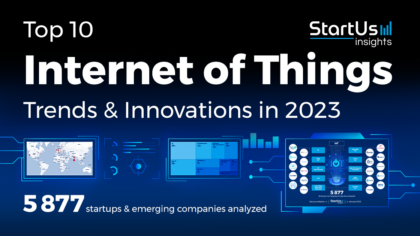



![10 Top Digital Twin Startups and Companies for Industry 4.0 [2025]](https://www.startus-insights.com/wp-content/uploads/2025/06/Digital-Twin-Startups-for-Industry-4.0-SharedImg-StartUs-Insights-noresize-420x236.webp)

